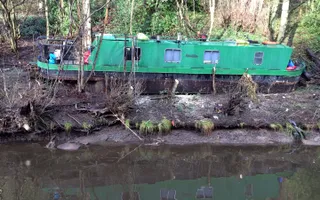With careful design, the waterways can provide sustainable options for site drainage from future developments. The managed nature of canal water levels, and the ability of our waterways to potentially accept surface water run-off, can help in wider consideration of flood mitigation measures.
Where a new (or modified) discharge is proposed, it will be reviewed to determine if the benefits to us outweigh the risks of acceptance. In the majority of situations, there is no obligation on us to accept discharges. There are many locations across the 2,000 miles of waterways that we care for that have agreements in place for us to receive such discharges.
Also take a look at our compiling your evidence base section in relation to our role as a reservoir undertaker and navigation authority.




